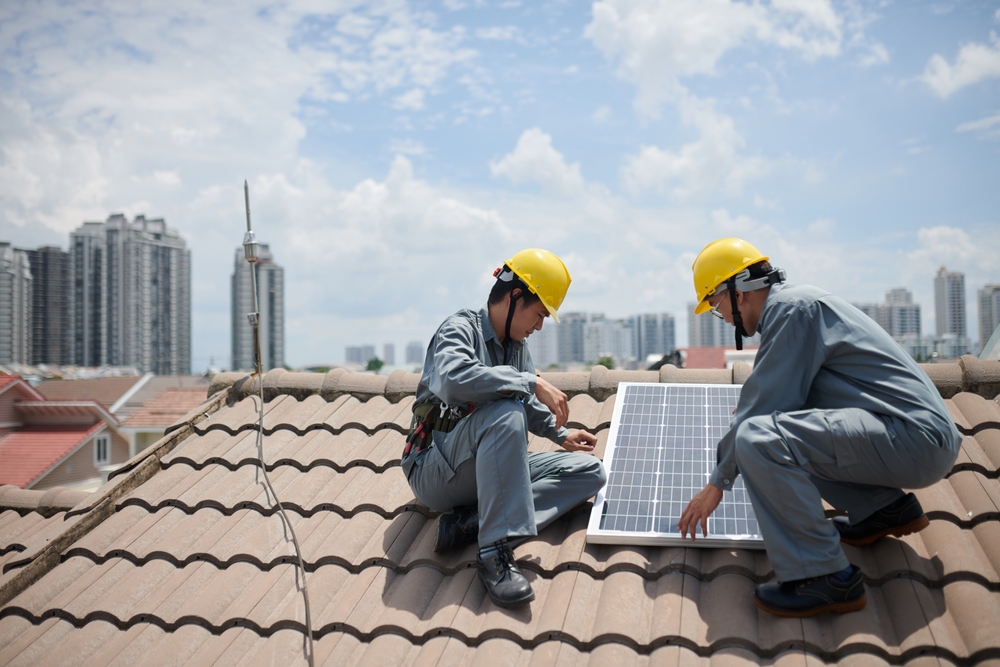Updated and corrected on: October 24, 2025
California’s clean energy and construction industries are evolving rapidly, prompting significant updates from the Contractors State License Board (CSLB) for 2025. Among the most impactful are the new rules affecting solar and roofing contractors, two trades deeply intertwined in the state’s sustainability movement. For anyone preparing for the California contractor license exam, understanding these updates is not just smart, it’s essential for long-term business compliance and success.
The Changing Landscape of Solar Licensing
As of 2025, the CSLB has proposed new definitions around which license types may install battery energy storage systems, but these rules are not currently in effect due to an active legal challenge. Historically, contractors holding a C‑46 Solar Contractor license could install both photovoltaic (PV) systems and energy storage batteries. In 2024, the CSLB voted to restrict C‑46 contractors from installing or modifying battery systems, stating that only C‑10 Electrical Contractors should perform that work. However, this regulation has been blocked by a court injunction following a lawsuit filed by the California Solar & Storage Association (CALSSA).
This means that the CSLB’s proposed restrictions are not enforceable at this time, and C‑46 contractors may continue to install batteries under the same conditions as before, pending final resolution of the case. The injunction preserves the status quo while the courts determine whether CSLB’s rulemaking was lawful and properly adopted.
In practice, C‑46 contractors can still install both solar panels and associated battery storage systems in late 2025, but many are choosing to strengthen partnerships with licensed electricians or pursue a C‑10 classification to prepare for possible future changes. Industry professionals should closely monitor the ongoing litigation and any formal announcements from CSLB or CALSSA for updates.
For example, a solar installer working on a residential PV project may still design, mount, and connect panels and batteries under a C‑46 license at present. If the legal injunction is eventually lifted, C‑46 holders could face new limitations — so forward‑planning and training remain important. Building professional partnerships and considering dual licensing are still smart strategies to stay competitive.
Roofing Work and Solar Integration: A New Balance
Roofing contractors are also feeling the effects of the 2025 updates. With the rise of integrated solar shingles and roof-mounted PV systems, CSLB has clarified which license holders can perform this increasingly common hybrid work. Roofers holding a C-39 Roofing Contractor license may install solar brackets and flashing integrated into their roofing projects, but they cannot install electrical wiring or panels unless they also hold a C-46 or C-10 license.
This clarification is critical, as many homeowners now expect roof and solar work to be completed by a single contractor. Roofers looking to expand into solar should strongly consider adding the C-46 license classification to their portfolio. Doing so not only enhances flexibility during project bidding but also helps avoid the delays and confusion that can arise from coordinating multiple subcontractors.
Contractors who take the time to train on modern photovoltaic systems will find themselves better positioned as the market blends roofing, solar, and energy efficiency work into a single home upgrade package. Investing in continuing education, manufacturer training programs, and joint ventures with solar installers can create powerful business synergies.
Compliance, Testing, and Consumer Protection
The CSLB has also reinforced education and compliance standards for these evolving trades. Beginning in 2025, candidates for specialty licenses such as solar, roofing, and electrical must complete additional coursework that emphasizes California construction law, safety, and modern technological practices. Exams now test both theoretical knowledge and practical skills, a shift toward ensuring contractors can demonstrate real-world competency before earning a license.
On the consumer side, the CSLB continues to promote its Solar Smart campaign, a public awareness initiative encouraging homeowners to verify contractor credentials and understand their contracts before starting any project. Contractors must issue clients a CSLB-approved Solar Energy System Disclosure Document before signing solar contracts, ensuring transparency around performance estimates, financing, and warranties.
For licensees, these disclosure and testing requirements aren’t mere bureaucratic hurdles, they’re tools to build trust and credibility. Contractors who embrace these updates demonstrate professionalism that resonates with quality-conscious clients and helps prevent disputes or CSLB complaints.
Preparing for Success Under the 2025 Rules
If you’re preparing for your California contractor license exam, studying these 2025 changes is crucial. Not only do they reflect evolving law, but they signal where the CSLB’s focus is heading: consumer protection, technical skill, and sustainable construction growth.
To adapt effectively, solar and roofing professionals should:
- Review the latest CSLB licensing guides and law books for updated exam topics.
- Understand that C‑46 contractors remain eligible to perform battery installations until the court rules otherwise.
- Consider pursuing both C-46 and C-10 classifications to remain versatile.
- Build strong partnerships between solar and electrical trades.
- Stay informed about future CSLB actions around battery storage safety and renewable integration.
Conclusion
California’s construction industry is entering a new era — one where clean energy, technology, and skilled labor converge. The debate between CSLB and CALSSA underscores how quickly solar licensing regulations can evolve. For contractors, success will depend on staying compliant with current law, preparing for possible regulatory shifts, and continuing education. Whether you’re studying for your license or expanding your business, mastering these updates will position you at the forefront of California’s next generation of contractors.

